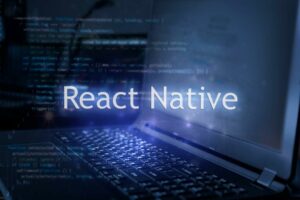Big data Analytics Tools Learn Top 5 Big data Analytics Tools And Its Uses
Content
There are several standardized and simplified tools and platforms for accomplishing data analysis needs. Then there are dashboards, visual report generators, business activity monitoring , and performance management modules to deliver the requested https://globalcloudteam.com/ information and knowledge of the authorized persons. With today’s technology, organizations can gather both structured and unstructured data from a variety of sources — from cloud storage to mobile applications to in-store IoT sensors and beyond.
The company determines the steps they need to take the steps to protect their client’s fraudulent transactions. It uses all past payment data and user behavior data to predict fraudulent activities. Taking the help of diagnostic analytics, the company comes out with a specific reason and then works on that to resolve the issue.
Seven key indicators related to superior assessment, environmental protection and efficiency of continuous reforming unit are selected as the objects of anomaly detection. It involves several steps such as data setting and standardization, correlation analysis and characteristic selection, construction of prediction model and abnormal judgment of single index. Among them, characteristic selection refers to the extraction of variables with strong correlation from seven key indicators after obtaining the correlation coefficient matrix. Examples of descriptive analytics include summary statistics, clustering, and association rules used in market basket analysis.
Tools used in big data analytics
Datawrapper is an open-source platform for data visualization that aids its users to generate simple, precise, and embeddable charts very quickly. Graduate students may receive financial assistance through fellowships, assistantships, tuition support, or loans. For more information, see the College of Graduate Studies Funding website, which describes the types of financial assistance available at UCF and provides general guidance in planning your graduate finances.

The guy who works as an Analyst working with Big Data typically will have the knowledge that comes from analyzing the data. There are different types of tools are available under Data Analytics that help to improve the data analyzing process that are data analysis, data cleansing, data mining, data visualization, data integration, data storage, and management. This makes a lesser effort and more efficient where it is not possible with more traditional business intelligence solutions. Big data analytics uses advanced analytics on large collections of both structured and unstructured data to produce valuable insights for businesses. It is used widely across industries as varied as health care, education, insurance, artificial intelligence, retail, and manufacturing to understand what’s working and what’s not, to improve processes, systems, and profitability. Technologies such as business intelligence tools and systems help organizations take the unstructured and structured data from multiple sources.
Learning, data warehousing, and data visualization, all using real-world applications and modern tools. Maintaining the Patient records, their insurance information and health plans, and also all other types of information which are difficult to manage. Hence it is so important application of big data analytics technology in the healthcare industry. Orange is famous open-source data visualization and helps in data analysis for beginner and as well to the expert.
How it works and key technologies
Big data analytics has found several applications in different industries. It has allowed businesses to know their customers better than they know themselves proving the technique to be extremely advantageous. Since traditional computing techniques cannot process these big data, various tools are being leveraged. The tools used for big data analytics have seen increased use in the recent past. Businesses, nowadays, rely heavily on big data to gain better knowledge about their customers. The process of extracting meaningful insights from such raw big data is reckoned as big data analytics.
- Graduates of the program find success with new careers and career advancement.
- News and World Report ranked SDSU’s entrepreneurship program No. 21 among the nation’s public universities.
- The concept of big data has been around for years; most organizations now understand that if they capture all the data that streams into their businesses , they can apply analytics and get significant value from it.
- The KNIME Analytics Platform tool is a very much helpful toolbox for data scientists.
But even in the 1950s, decades before anyone uttered the term “big data,” businesses were using basic analytics to uncover insights and trends. The volume of data that one has to deal has exploded to unimaginable levels in the past decade, and at the same time, the price of data storage has systematically reduced. Private companies and research institutions capture terabytes of data about their users’ interactions, business, social media, and also sensors from devices such as mobile phones and automobiles.
What is Big Data Analytics? Definition, Advantages, and Types
The challenge of this era is to make sense of this sea of data.This is where big data analytics comes into picture. It presents a variety of integrated products that aid organizations in visualizing and understanding their data. Tableau can handle all data units and is easy to use for both technical and non-technical users, and it provides real-time personalized dashboards. In the current situation, the volume of data is growing along with world population growth and technology growth. This is a clear sign/indication of the increasingly widespread use and necessity of Big Data Analysis solutions. Diagnostic analytics is one of the more advanced types of big data analytics that you can use to investigate data and content.
In this method, several closely related features are grouped into a factor, and then a few such factors are used to reveal the most information of the original data. The world has become faster and so has become the process of decision making. Nowadays, companies don’t have to wait for days or months for a response. Predictive analytics doesn’t only work for the service providers but also for the consumers. It keeps track of our past activities and based on them, predicts what we may do next. In an era where technology has reached the pinnacle of its use and has completely overpowered our lives, the amount of data exchanged is enormous.
Descriptive Analytics
This method has various applications in plants, bioinformatics, healthcare, etc. It can be improved with various techniques such as machine learning, intelligent tools, and network analysis. This chapter describes applications of big data analytics in biological systems. These applications can be conducted in systems biology by using cloud-based databases (e.g., NoSQL).

Any tools and instruments may be used to identify depression, dependent on their study. It is feasible to use sensors and tools and some of the latest secure robotics and automation to build a platform that will help people diagnose distress and therefore see physicians and therapists. In the future, we will implement chatbots that may also be used for depression diagnosis and rehabilitation. Various combined technology may contribute to an efficient depression diagnosis approach.
They can be used to tweak business strategies, marketing techniques, and many more. It may interest you to also read about the 5 ways in which businesses are using big data analytics. It can be used to enhance the process of drug development, finding the right patients for clinical trials, etc.
Whether the sample is anomaly or not can be judged by the distance value, whose threshold is selected statistically based on historical data. Data mining is to extract hidden, unknown, but potentially valuable information from massive, incomplete, noisy, and random data. The 10 most influential data mining algorithms were selected by the IEEE International Conference on Data Mining Series in 2006. These algorithms mainly come from machine learning, covering classification, clustering, regression, statistical learning, and so forth. Also, they are able to foresee any upcoming risks taking the help of predictive analytics, and mitigate that risk backed by prescriptive analytics, and other types of statistical analysis techniques. Analyzing relationships and connectivity in text data is key to entity identification in unstructured text.
Prescriptive Analytics
The management and analysis of Big Data applications with appropriate programming tools, statistical models, social theories, business concepts, and analytic software. The SDSU Big Data Analytics Program is a transdisciplinary program across technology, business, engineering, science, and social science domains leading to a Master of Science Degree in Big Data Analytics at San Diego State University. It is to meet the strong demand for data analytic jobs in the era of data- and knowledge-economy.
Most Popular Big Data Analytics Tools
Furthermore, the operation parameters can be recommended based on the raw material quality and optimization objectives. The specific research methods can be divided into data acquisition, data setting and standardization, and correlation analysis. Data acquisition is actually the process of importing all historical data such as operational data, quality data, corrosion data, cost data, material balance data and energy data into the cloud platform . Therefore, it is important to develop the interface between the relevant system and the cloud to realize real-time data import.
As the monsoon season approached, families desperately needed to rebuild more substantial housing. The International Organization for Migration , a first responder group, turned to SAS for help. SAS quickly analyzed a broad spectrum of big data to find the best nearby sources of corrugated sheet metal roofing. This tutorial has been prepared for software professionals aspiring to learn the basics of Big Data Analytics. Professionals who are into analytics in general may as well use this tutorial to good effect.
Because it removes many physical and financial barriers to aligning IT needs with evolving business goals, it is appealing to organizations of all sizes. Making faster, better decisions.The speed of in-memory analytics – combined with the ability to analyze new sources of data, such as streaming data from IoT – helps businesses analyze information immediately and make fast, informed decisions. Demonstrate proficiency in data analytic software, programming languages, and database management tools. Articulate the basic principles of statistical inference and data analytical methods, including statistics, machine learning and spatiotemporal analysis.
Visual text analytics
Through the different types of analytics, this field has been taking on the world. Almost every industry, from banking to government, healthcare, and retail, uses it to solve challenges and make better decisions. Prescriptive analytics provides a solution to a problem, relying on AI and machine learning to gather data and use it for risk management. There are four main types of big data analytics that support and inform different business decisions. Tableau is an end-to-end data analytics platform that allows you to prep, analyze, collaborate, and share your big data insights. Tableau excels in self-service visual analysis, allowing people to ask new questions of governed big data and easily share those insights across the organization.
The history of Big Data analytics can be traced back to the early days of computing, when organizations first began using computers to store and analyze large amounts of data. Big Data analytics is a process used to extract meaningful insights, such as hidden patterns, unknown correlations, market trends, and customer preferences. Big Data analytics provides various advantages—it can be used for better decision making, preventing fraudulent activities, among other things. APACHE Spark is another framework that is used to process data and perform numerous tasks on a large scale. It is also used to process data via multiple computers with the help of distributing tools.
After you identify trends and insight with descriptive analytics, you can use the other types of analytics to learn more about what causes those trends. The benefits of diagnostic analytics include a better understanding of your data and various ways to find the answers to company questions. This type of analytics enables businesses to understand their customers by using tools for searching, filtering, and comparing the data produced by individuals.